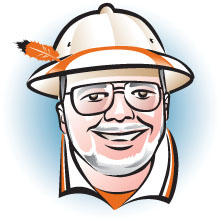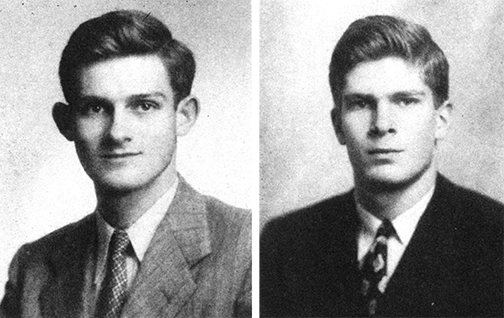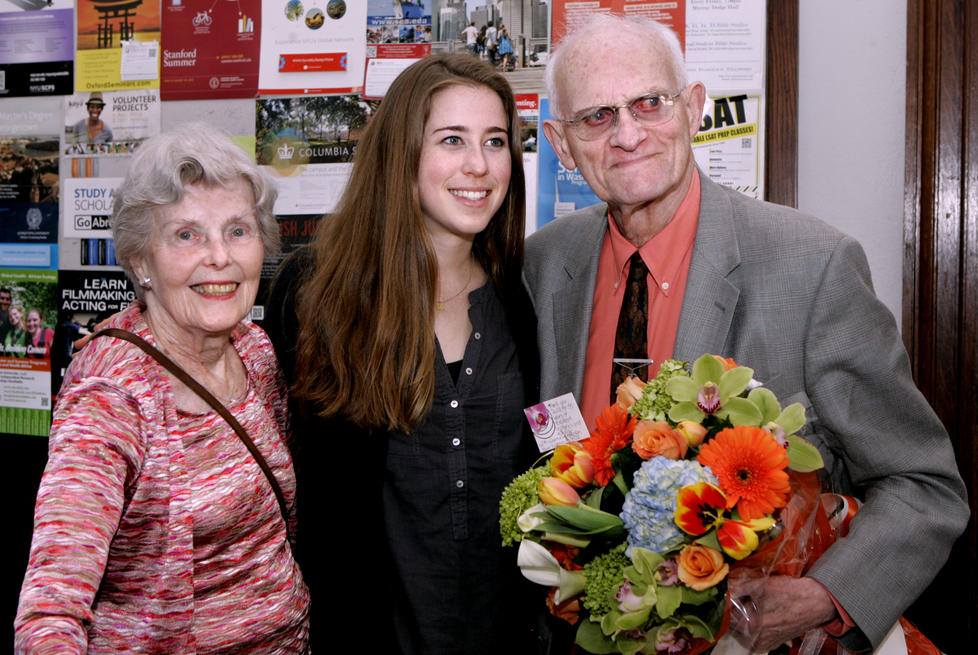“My father used to play with my brother and me in the yard. Mother would come out and say, ‘You’re tearing up the grass’; ‘We’re not raising grass,’ Dad would reply. ‘We’re raising boys.’”
— Harmon Killebrew, Minnesota Twins Hall-of-Famer
There were giants in the earth in those days.
There was Joseph Henry, who began as an apprentice watchmaker and ended up as not only a revered Princeton professor, but the pre-eminent American scientist of the first half of the 19th century and founding head of the Smithsonian Institution.
There was Andrew Fleming West 1874, who bummed around European academe for a while, dabbled in high school teaching and administration, then came back to Princeton and became its institutional dreamer-in-chief, whipping up the Sesquicentennial at which the school re-created itself in 1896, then forging ahead to found, build, and become initial dean of the Graduate School a century ago.

There was Christian Gauss, who learned linguistic skills as a foreign correspondent in Paris alongside Oscar Wilde, then became one of Woodrow Wilson 1879’s original “preceptor guys” in 1905 at the advanced age of 27, the father of modern language study and the creative arts program at Princeton, the first of the legendary Dante lecturers, a national authority on the future and promise of higher education, and dean of the college for 21 years.
And there was not, among the group, even a whiff of a Ph.D.
Today, under duress, there’s a cautious willingness to ignore formal academic credentialing in a few specialized faculty cases: Creative artists, like sculptor Joe Brown or writers John McPhee ’53, Toni Morrison, or Joyce Carol Oates; heavyweight public intellectuals like Admiral Mike Mullen or Paul Volcker ’49 in the Wilson School. But unless you’ve chaired the Fed or won a Nobel Prize, if you’re interested in a mainstream research faculty gig at Princeton or its peers you are well advised to start the seven-year slog toward your Ph.D. ASAP. In the decade 1940 through 1949, there were a total of 33,490 Ph.D.s awarded in the United States; in 2013 alone there were 52,700.
One of the rarer and rarer exceptions to that ticket-punching ethos is not only a good story in himself, but serves by chance of the gene pool as a pointer toward the high-powered Ph.D. world of today. Professor emeritus David P. Billington ’50 is possibly the most revered engineering teacher of the 20th century at Princeton. Beyond that, his experience and instincts, in contrast to a pure research and theory approach, have generated a singular vision of his own bailiwick of civil engineering as well as significant advances in the studies of art and architecture. Much of his story is told in a highly entertaining interview conducted by Tom Swift ’76 (said the columnist, languidly) for the Princetoniana Committee’s oral-history project in 2012.
Billington’s approach has been admirably consistent. He didn’t know what he wanted to do when he entered Princeton after his naval service in 1946; he became an engineer because he was good at math and science, and it was easy to switch out of if he so decided. He never quite did, but mainly because he found a catch-all (no longer around) called Basic Engineering, which allowed him to take almost everything a liberal-arts major did; his favorite was Roy Welch’s Beethoven course in the music department. He loved art and literature, which became fundamental to his career, and to this day has never taken a civil engineering course for credit.
With his brother headed to Europe in 1950 (more on that later), David on graduation applied to the brand-new Fulbright program, meeting his wife – a musician who loved his knowledge of Beethoven – in Belgium, and studying bridges, which were all newly rebuilt since the war. Back in the United States, he immediately became an engineering designer because no one else knew the cutting-edge European techniques. Having written some of them up, and serving on the Engineering Council at Princeton, he was asked by the chair of civil engineering to teach a senior course at night. Then – to his surprise – he was offered a full-time assistant professorship, and when he turned that down, an associate professorship, on the logical basis that he knew his stuff and was a great teacher (as we all know now). He joined the faculty at age 33 in 1960, despite his lack of civil engineering courses, never mind a Ph.D.
So when the architecture students needed a teacher for structural engineering, Billington got the nod. Through them, he discovered the Swiss engineer Robert Maillart and his bridges, which were designed for beauty as well as function. Billington then began constructing a revolutionary course including art, architecture, and civil engineering, which formally started as Civil Engineering 262 – “Structures in the Urban Environment” – in 1974 (known to all as “Bridges”). He taught the course for 40 years, giving his last class in 2013. Habitually one of the most popular courses in the school, it was followed by multiple books on Maillart and thin-shell concrete structures. He curated exhibitions of aesthetic engineering at the Art Museum, in the 1970s about as common as modeling miners’ helmets at a Paris fashion show. Billington then put together the equally unusual introductory Engineering 102 – ‘Engineering in the Modern World” (and ensuing books as well) – featuring the engineers who made crucial advances in the last 250 years and “focusing on scientific, political, ethical, and aesthetic aspects in the evolution of engineering,” to cite the current course catalog. Ethical? Indeed, Billington’s interest in the philosophical concerns of building things extends not only to beauty, but to the human relationships in the engineering process, down to who’s cheating whom and why. In almost any modern sense, his career and huge fan club are tributes to a one-man interdisciplinary program, a true humanist with a slide rule (or whatever the heck engineers use these days).
To examine a contrasting, but equally influential, academic career in the now-dominant Ph.D. mode, we can stay in the great (now Old Guard) Class of 1950, and – intriguingly – in the same family. Jim Billington ’50, two years younger than his brother, went to Princeton as a 17-year-old when David was coming out of the service at 19. Jim was the valedictorian in 1950 (as per his whole life, jokes his big brother) and won a Rhodes scholarship, coming home from Oxford after three years with a history Ph.D. (try that today…). (Jim’s overseas sojourn for his Rhodes was the reason David wanted to study in Europe, too, and came up with the Fulbright in Belgium.) A wildly popular professor at Princeton from 1964 to 1973, Jim taught Russian history, writing books and even a couple of PBS series over the years about the Eurasian power, and additionally a landmark examination of major world revolutionaries, Fire in the Minds of Men. A gifted administrator, he was enticed to Washington to run the Woodrow Wilson Center for 14 years, including the creation of the Kennan Institute for Russian Studies there. Then he advanced to one of the premiere academic positions in the country, Librarian of Congress, where he’ll be retiring at the end of this year after 28 years. His term has included not only the advent of the Internet and online digital services, but also global partnerships with other national libraries, the enactment of his proposal for a world digital library, large expansions of audiovisual materials and efforts at their preservation, and the library’s initial joint projects with a public-private advisory council and fundraising. He has received 40 honorary degrees, Princeton’s Woodrow Wilson Award, and even has been awarded the Order of Friendship of the Russian Federation. A global teacher, if ever there was one.
Even so, it’s nice to think that, at a teaching college, substance and classroom skills among non-Ph.D.s can equate to spiffy academic credentials when it counts. The famed address at West’s 1896 convocation was, of course, given by the man who became Princeton’s first Ph.D. president (not to mention America’s), Woodrow Wilson; but his inspiring counterpart a hundred years later at the 250th was non-Ph.D. Toni Morrison. Having made his reputation at the school named for Wilson, it’s somehow also comforting that Wilson’s current presidential (and law-degree-bearing) successor at Princeton, Chris Eisgruber ’83, has never worried about a Ph.D. either. And it’s intriguing that the first of the Billington brothers to receive a Princeton honorary doctorate – this past June – was David, much to the rejoicing of ethical and aesthetic engineers everywhere.














No responses yet